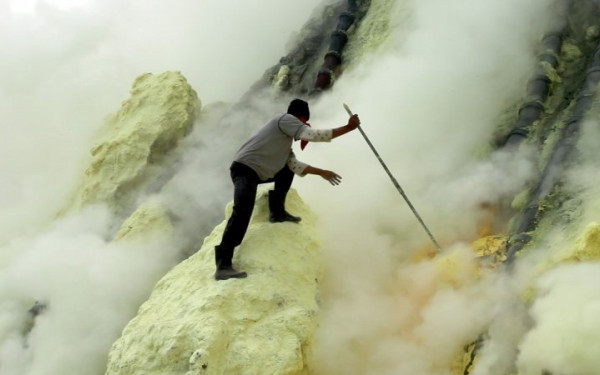Zoo York
Occupy Wall Street Becomes a Tourist Attraction
New York, NY — The corner of Broadway St. and Liberty St. in New York City brings together diverse crowds these days. Since mid-September, ranks of stoic police officers have been standing in juxtaposition to the milling hive of verbose protesters. Lately, a third group can be added to the mix: crowds of picture-snapping tourists.
Catching on to the buzz around Zuccotti Park—the headquarters of the Occupy Wall Street protest—tourists are taking a chance to observe the protesters from the border of the park. The braver ones are even beginning to venture inside to get a closer look at the wild and woolly protesters in their natural habitat.
“I’m surprised at how many people are here just to spectate,” said Kenard, a New Yorker who visited the protest for the first time on Saturday.
It’s easiest to spot the tourists standing on the park’s perimeter, a dead giveaway being the cameras in their hands and jaw-dropped expressions. Many stopped to pose with protesters, the most conspicuous and out of place being those wearing suits.
Inside the park itself however, the distinction between the watchers and the watched is less obvious. It takes snatches of overheard conversation in foreign languages and some stereotyping—think fanny-packs—to distinguish the protesters from the observers.
The protest’s combination of celebrity and infamy has made it an alluring stop for curious people out to see the city’s sights.
“There are a lot [of tourists]. The joke we’ve been saying is that people come to New York City for the Statue of Liberty, the Empire State building and the Occupy Wall Street protest,” said Gary Raia, who’s been with the movement since it started on Sept. 17.
“Now the movement has become so well-known that people want to see what it is about,” said Bill Dobbs, a press agent for the movement, who’s also been a part of OWS since its inception.
The location of the protest hasn’t hurt, either.
“The tourists already come to this area because of the World Trade Center, and further down there is Battery Park,” said Kenard. “We went to visit the 9/11 memorial, passed by and decided to check it out, but [the protest] was not a priority for us,” said Kathy Gash, who was visiting from San Diego with her husband.
Given this, there are a few groups of tourists who happen on the protest unprepared. “There are some people that walk out of the subway very confused, but if you don’t know about this, you must be blind,” said Raia.
The protesters are definitely capitalizing on the influx to rally support, or at least incite more dialogue. Pamphlets in English and Spanish, buttons and t-shirts are circulated throughout the park. Various groups have set up tables in and around the park to raise interest in their specific issue and to collect donations.
It hasn’t always been this way, though.
“I’ve been here since the first day when people were shy about coming into the Plaza. There was almost an invisible line between the people and the protesters,” said Dobbs.
The spectators may be more willing to observe the protest as of late, but they adamantly maintain their non-protester status; some tourists didn’t even want to be interviewed to avoid association with the movement beyond their observations.
Meanwhile, many protesters seem aware that the site has turned into a spectacle. An Occupier in a monkey costume carried a sign saying, “This is a goddamn circus,” while another toted one that read, “If you’re gonna treat us like a zoo, at least give us money.”
While humorous, the signs are evidence of a growing frustration at how tourists are treating the OWS site. “I wish people would get involved instead of walking by, taking pictures, and smiling,” said Raia.
It’s this strange dance of police officers, monkey suits and business suits that makes the protest such a fascinating spectacle. But for the people trying to change the world, it’s not enough for people to just watch from the sidelines; it won’t be mission accomplished until the tourists are in on the act.

_900_600_90.jpg)
_600_832_s.png)


11__600_375_90_s_c1.jpg)

9_600_375_90_s_c1.jpg)